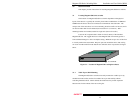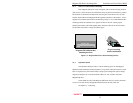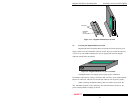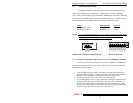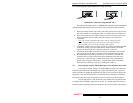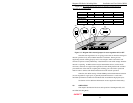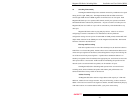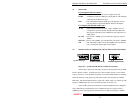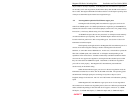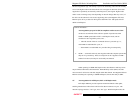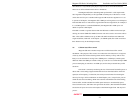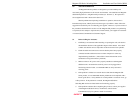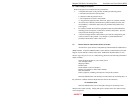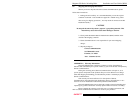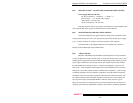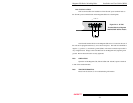
Magnum 500-Series Switching Hubs Installation and User Guide (08/98)
GARRETT
23
The auto-negotiation logic will attempt to operate in descending order and will normally
arrive at the highest order mode that both devices can support at that time. (Since auto-
negotiation is potentially an externally-controlled process, the original “highest order
mode” result can change at any time depending on network changes that may occur). If
the device at the other end is not an auto-negotiating device, the Magnum 528’s Fast
Ethernet ports will try to detect its idle signal to determine 10 or 100 speed, and will
default to half duplex.
General information -
Auto-negotiation per-port for 802.3u-compliant switches occurs when:
the devices at both ends of the cable are capable of operation at either
10Mb or 100Mb speed and/or in full- or half-duplex mode, and can
send/receive auto-negotiation pulses, and . . .
-- when the second of the two connected devices is powered up*, i.e.,
when LINK is established for a port, or
-- when LINK is re-established on a port after being lost temporarily.
•
NOTE – some NIC cards only auto-negotiate when the computer system that
they are in is powered up. These are exceptions to the “negotiate at LINK –
enabled” rule above, but may be occasionally encountered.
When operating in 100Mb half-duplex mode, cable distances and hop-counts
may be limited within that collision domain. The Path Delay Values (PDV) bit-times
must account for all devices and cable lengths within that domain. For Magnum 528 Fast
Ethernet switched ports operating at 100Mb half-duplex, the bit time delay is 50BT.
4.5 Auto-negotiation for 10Mb ports, half- or full-duplex mode
Full-duplex Ethernet provides separate Transmit and Receive data paths,
enabling simultaneous bi-directional collision-free data movements on a port. The
network topology must be a “star” type, not a “bus” type. With full-duplex mode, the



